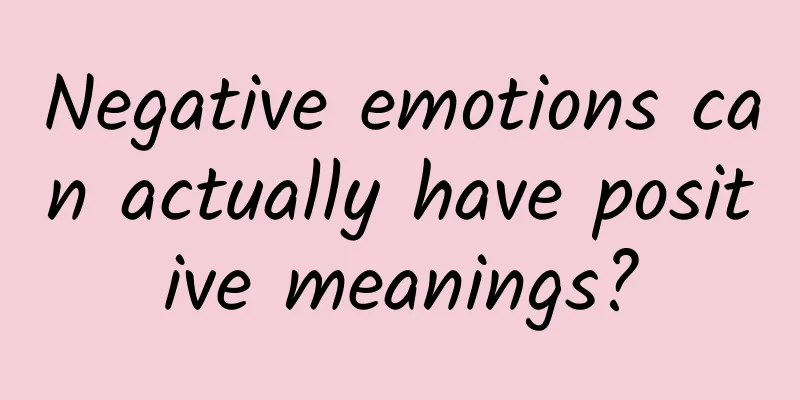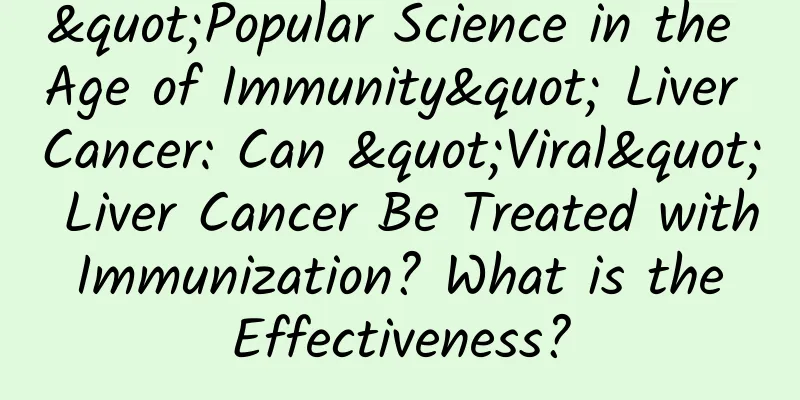Negative emotions can actually have positive meanings?

|
Humans have six basic emotions: happiness, anger, fear, sadness, surprise, and disgust, as well as complex emotions such as jealousy, shame, humiliation, self-blame, and pride. Emotions themselves are neither good nor bad. They are a kind of instinctive reaction. Only when they lose control will they harm health and hurt others. If you understand your emotions better, you will be more accepting and in control of them. In 1878, French neurologist Broca discovered a circle of structures on the inner side of the mammalian brain that was completely different from the surrounding cortex, and named it the limbic lobe. Later, psychologist MacLean collectively referred to the limbic lobe and some adjacent neural nuclei as the limbic system. The limbic system includes structures such as the cingulate gyrus, orbital gyrus, subcallosal gyrus, piriform region, hippocampus, amygdala, septum, hypothalamus, and mammillary bodies. When various sensations are transmitted to different parts of the limbic system, different emotions will be triggered. The anger and aggression center is located in the hypothalamus in the limbic system. In the 1960s, Professor Flynn of Yale University found that stimulating different parts of the hypothalamus would cause emotional aggression and predatory aggression in cats respectively; when performing emotional aggression, the cat's back arches and emits sharp hisses. Cat-dog fights are typical emotional aggression; when performing predatory aggression, the cat crawls forward and pounces on the prey when the opportunity arises, and does not issue threats or warnings in advance. The fear and anxiety center is located in the amygdala inside the temporal cortex of the brain. Professors Brooke and Busey of the University of Chicago removed the bilateral temporal lobes and amygdala of monkeys. The monkeys' fear response was significantly reduced. They would involuntarily approach and touch every object they saw, and put the object in their mouths, as if they were identifying the object through their mouths rather than their vision. Rats whose amygdalae had been removed would actively approach wild cats, and wild cats whose amygdalae had been removed would become as docile as domestic cats. Because there was no fear, the animals' aggressive behavior was also reduced. The pleasure center is located in a relatively scattered area. Olds and Milner of the California Institute of Technology designed an experiment: they implanted electrodes in rats' brains and trained the rats to self-stimulate by stepping on a pedal. When the electrodes were placed in the septum of the limbic system, the lateral hypothalamus, the medial forebrain bundle, the ventral tegmental area of the midbrain, and the dorsal pons, the rats would continue to self-stimulate until they were exhausted. These areas are called "pleasure centers" and are related to reinforcing behaviors, such as food, exercise, and sexual behavior. If they are over-stimulated, they may become addictive. Among the basic human emotions, happiness is popular, while the rest are offensive. Why do humans have so many "negative emotions"? In fact, "negative emotions" have their positive meanings. 70 million years ago, the ancestors of mammals were very careful to avoid the attacks of dinosaurs, and they had to be alert to the slightest sound, otherwise their lives might be in danger. If they missed the opportunity to obtain food or mate, they could still have new opportunities; but if they failed to avoid danger, their lives would be completely over. We humans who have survived through layers of survival competition and the survival of the fittest have memories of negative experiences engraved in our genes, and our experience of negative emotions is more complex and intense. Without negative emotions, we may not be motivated to make progress and be content with the status quo, and it won’t be long before we lose the competition for survival; if negative emotions are too strong and persistent, they can also cause harm to the human body, acting on the autonomic nervous system, affecting the normal functioning of internal organs, and possibly causing high blood pressure, heart disease, headaches, gastric ulcers, breast cancer and many other diseases. A thought-provoking rule is: the more a person can accept negative emotions, the less troubled they are by them; the more one wants to escape or get rid of negative emotions, the deeper they will be trapped in them. Many philosophers and psychologists advise the world: life is full of suffering, and experiencing suffering itself is the path to liberation. This requires people to face the facts that make them feel so bad, constantly reflect on and correct their cognition and behavior, accumulate wisdom and strength, and finally gain lasting peace and tranquility. The key to regulating emotions is to improve cognition, and cognition determines the quality of a person's life. When our cognition reaches a bright state, it is like sailing on the sea with a steady rudder, no longer swayed by the stormy waves, and we will arrive at a new continent of happiness. |
<<: Why are there so many beautiful ladies in Jiangnan? Because they all like the "Jiangnan Diet"!
>>: What waterfalls are there in Jiuzhaigou? What is the largest waterfall in Jiuzhaigou?
Recommend
Is it good for women to drink Pu'er tea?
It is said that women are made of water, so women...
How big is a normal mature follicle?
In the female body, the ovaries are a relatively ...
What to do if you have stomach pain during pregnancy
We all know that pregnancy is a very difficult th...
[Medical Q&A] What exactly are dust mites that often cause allergies?
Author: Wang Ling Children's Hospital Affilia...
What is the meaning of the Analects? How is the argumentation style of the Analects different from that of Mencius?
Since the Song Dynasty, The Analects has been lis...
Why are the boundaries of breast nodules not clear?
Once women develop breast nodules, they must go t...
How to perform surgery for uterine erosion
When it comes to cervical erosion, some female fr...
What lubricant to use for vaginal dryness
Vaginal dryness is a relatively common symptom, m...
What are the dietary and lifestyle taboos for postpartum women?
Having a baby is a big event for women and famili...
Can’t touch water or take a shower after skin abrasion?
That is not the case. There are some rumors that ...
What food is better to eat when you have stomach pain during menstruation?
Nowadays, due to various reasons, more and more w...
What to eat during menopause to regulate the effect of good
After entering menopause, women's bodies will...
Why does it hurt when girls urinate?
Due to their special physiological structure, wom...
What are the causes of high uric acid in women?
I believe everyone is familiar with the symptoms ...









